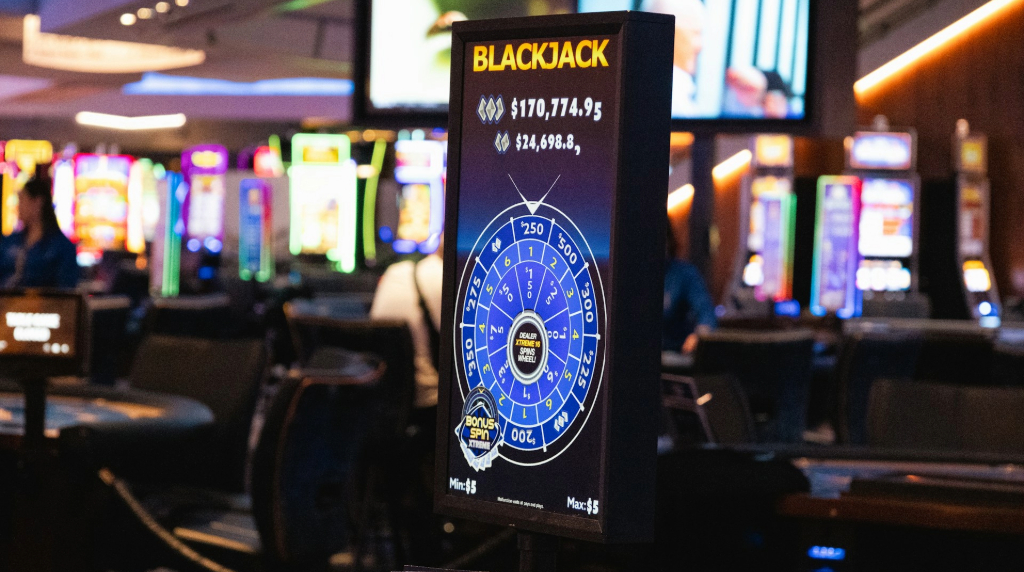Card Counting Secrets of the MIT Blackjack Team
What is Card Counting?
You may have heard of card counting before, as it comes up in nearly every film featuring casinos and gambling. It is not an easy thing to do. It requires a very high skill level, a lot of concentration, and some excellent math skills. Despite what you may have thought, card counting is not actually illegal, unless you use a machine to do it. That doesn’t mean that casinos are okay with it though; if a casino suspects you of counting cards, they will probably blacklist you. Most casinos have numerous measures in place to make it more difficult to count cards and to detect those who manage to do it. If you want to learn how to do it, here’s our guide on the topic.
Back in the 70s and 80s though, it was much harder to catch card counters, as casinos didn’t have all the technology which they employ today. That doesn’t mean that people were just strolling out of casinos with huge wins all of the time though. Card counting is very difficult and not many people can do it well. Amateur card counters often ended up losing large amounts of money at the tables when they failed to keep track of the cards. A man who could do it successfully was Ken Uston. He became pretty famous in the industry as he took organized groups of gamblers to casinos around the world to work as part of a team. He published a number of books about blackjack and working as a team to beat the house, which garnered a lot of attention from the public.
If you are counting cards as a team, you usually split into two groups: the spotters, and the big players. As you can imagine, keeping track of all of the cards on the table (and still to come) is not an easy task. Dealers move quickly and there are numerous decks in a game. That’s why a team will have spotters. It is their job to keep count on the table, placing only the minimum wagering requirement. When the spotter recognizes that the cards left to be dealt make up an advantageous composition for the big players on their team, they will give the players a pre-arranged signal. When the signal comes, the big players know that it is time to put down a massive bet – as long as the spotter has it right!
Some blackjack card-counting teams will also use an investor so that they can maximize the amount of money won. An investor might be one person backing the team, but more often than not it is just a pool of money gathered from friends and family of team members.
Of course, this is a simple explanation of card counting. In reality, it is a very complicated and difficult thing to do successfully. Also, bear in mind that different types of games can affect whether you can count cards. Playing automated blackjack games, for example, rules it out entirely. On the other hand, the set up of live blackjack makes it more possible.
When the idea first gained public attention, many people tried their luck, thinking that it would be an easy way to make big money. As we said, many of these people will have just ended up losing big at the tables instead. There are plenty of stories of small successes too, but the MIT Blackjack Team has won a place in history for being one of the most productive and successful card-counting teams there has been.
How Did It Start?
The first members of the MIT Blackjack Team got together in 1979. However, this first incarnation of the team did not enjoy the massive success for which they are known. A lot of members lost faith in the idea when things did not go particularly well and left the group.
The turning point for the team came about due to a coincidental meeting in a Chinese restaurant one day in 1980.
In May 1980, the team was being led by J. P. Massar, famously nicknamed Mr. M. While he was eating out, he overheard a man at a nearby table discussing card counting. He went over and introduced himself to the man, who turned out to be Bill Kaplan. Kaplan was a recent Harvard graduate who had run a successful card-counting team while at university. His current team was just breaking up, so Kaplan was at a bit of a loose end.
Kaplan turned out to be just what the MIT team needed. Up until now, the team had been trying to use very complicated (unnecessarily complicated, Kaplan would argue) counting systems and spent more time trying to figure out the math than playing well. Kaplan taught the team how to streamline and improve their techniques. He was also very business-minded and set up a new internal system; the player would get paid a per-hour rate while they were at the tables, and then receive a share of the profits made. With Kaplan’s changes in place, the team set out with ten members and a common pot of $89,000. They doubled it in just ten weeks.
A Well-Oiled Machine
While the story of the MIT Blackjack Team can sound rather underhanded, none of what they were doing was actually illegal. Edward Thorp – considered to be an expert on beating the house and recognized as the founder of card counting – believed in exploiting flaws in the system rather than using illegal means. The MIT team followed this philosophy and looked for loopholes that did not break the law.
As mentioned, the MIT team wasn’t one constant set of people. People left and joined over the years, although the process to join the group wasn’t easy. Newcomers were required to undergo many practice sessions under purposely stressful conditions in order to ensure that they were up to the challenge. If you made it, though, there was a lot of money to be made and many of them received huge amounts in profit. Of course, not everyone won all of the time. Losing streaks did happen, both for individuals and for the group. When this happened, the team encouraged one another and persevered. In the long term, they made a lot of money and it was important not to get dispirited by losses.
Card counting was made more difficult as the casinos became more aware of what was going on. Although not illegal, casinos obviously disapproved of the method which was allowing people to beat the house on a regular basis. Card-counting teams had to be careful not to get caught as they would usually then be banned from the casino. In order to be as subtle as possible about what they were doing, the MIT spotters used code words to let the big players know what was happening. If a spotter used one of the predetermined code words in a sentence, it was a signal to the big player to change the bet.
- Tree – because it looks like a tree
- Switch – because of the two options (on or off)
- Stool – because it has three legs
- Car – because it has four tires
- Glove – because it has five fingers
- Gun – because it holds six bullets
- Craps – because of the lucky seven throw
- Pool – because of the eight ball
- Cat – because they supposedly have nine lives
- Bowling – because it has 10 pins
- Football – because a team has eleven players
- Eggs – because they are sold by the dozen
- Witch – because it is an unluckly number
- Ring – because it can be made of 14-carat gold
- Paycheck – because most people are paid on the 16th of the month
- Sweet – because of the “sweet” 16th birthday
- Magazine – because of the teen magazine called Seventeen
- Voting Booth – because you can vote at 18 years old
Discipline and concentration are of the utmost importance when counting cards. It was vital to pay attention to the spotters and make sure that a code word wasn’t overlooked, or it could ruin the whole game. The players weren’t just gambling; they were a well-oiled machine. Everyone filled in reports after their games and these became extremely useful resources. Everyone wanted to minimize the risks as much as possible. The team was always keeping an eye out for casinos that weren’t yet set up to counteract card counting and even kept lists of the security personnel who were aware of the technique.
What Happened Next?
The MIT Blackjack Team grew rapidly during the 1980s, with over 30 players rotating through the casinos at one point. They had a gambling capital of over $300,000 now – a far cry from where they started. Their investment returns reached 300% some years which was an almost unbelievable rate. Of course, the casinos could not fail to notice them now. Some of the members were blacklisted as they were known to the industry as card counters. Bill Kaplan had to take a step back because as soon as security saw him in a casino they would know that the MIT team were playing and would start looking for them. Luckily, there was still a constant stream of new members joining the team too, so there were always new faces to put into the casinos.
Towards the end of the 80s, things started to cool off. Numerous members were leaving and with the casinos catching on to the team’s techniques, they were losing their advantage. Kaplan, Mr. M and John Chang got together in a new attempt to keep the card-counting game going. In 1992, they founded a firm called Strategic Investment. This was really the MIT Blackjack Team with a new name and they intended to take advantage of the new casinos opening in Connecticut who wouldn’t be familiar with the team. The new firm had a strict structure and a budget of over $1million. There were more than 80 experienced card counters on the payroll; the MIT Blackjack Team had turned into something truly extraordinary.
So, what happened? Surprisingly, this story doesn’t end with the team going down in flames. At the end of 1993, Strategic Investment Ltd decided to dissolve in a mutual and amicable decision. New and more profitable investment opportunities were opening up and the businessmen in the team wanted to try their luck in other markets. They probably got out at a good time, since casinos were becoming more and more savvy to the card-counting techniques. Security measures were becoming stricter and anti-card-counting agencies were employed. Some operators were even starting to comb through the MIT yearbooks to pick out who could be a potential MIT Blackjack Team member.
Not everyone got out of the game when the team split up though. While many will have joined other teams, two off-shoot teams formed from former MIT team members: the Amphibians and the Reptiles. While not a huge amount is known about either group, they were both very successful and gained notoriety due to their connections with the famous MIT team. As the 90s came to an end, most of the known MIT members dropped out of the card-counting circuit, and the infamous group was finally finished.
Gone, But Not Forgotten

Despite mostly disappearing after the 1990s, the MIT Blackjack Team is still (in)famous in the world of gambling – and even beyond. Ben Mezrich’s Bringing Down the House tells their story, and the film 21 is based on it too. Both brought huge attention to the team, and some of the lead players have publicly spoken out about their card-counting days.
Card-counting teams like the MIT team have had a huge impact on casinos worldwide. Rules and regulations were put in place or changed to counteract such card-counting teams, including many that still stand today. Whatever your opinion on card counting, it is undeniable that the MIT Blackjack Team changed the face of gambling forever.



